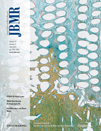Vertebral fracture and intervertebral discs
To the Editor:
We were interested to read the recent article by Wang and colleagues,1 which showed that vertebral bone mineral density (BMD) increases with intervertebral disc degeneration in male spines aged 21 to 64 years. The authors imply that a similar relationship would persist in older spines. We write to suggest that such extrapolation is unwarranted, because old and severely degenerated discs behave rather differently from the middle-aged discs in Wang and colleagues' study.
In middle-aged men, severe disc narrowing is uncommon,2, 3 and this may explain why Wang and colleagues used evidence of internal disruption rather than disc narrowing to infer disc degeneration. Also in middle-aged men, levels of peak spinal loading and bone strength often remain high.4 Under these circumstances, dense vertebral bone could possibly threaten the adjacent discs by increasing pressure in the disc nucleus, or by interfering with metabolite transport through the vertebral endplate, as suggested by Wang and colleagues.
Another mechanism operates, however, in old age. Degenerated discs typically lose height at a rate of 3% per year,5, 6 and can become very narrowed, especially in the oldest women.3, 7 Adjacent neural arches then move so closely together that they can resist more than 50% of the compressive force acting down the long axis of the spine, in upright postures.8, 9 Abnormally high load-bearing by the neural arches causes the anterior vertebral body to be stress-shielded,9 leading to focal anterior bone loss, which has been quantified in cadaveric spines aged 62 to 94 years.9 This mechanism explains several features of vertebral fracture in the elderly: why vertebral strength is reduced in flexion10 when loading is concentrated on weak anterior bone, and why vertebral fracture most commonly involves anterior wedge-shape deformity,11 and is associated with severe disc narrowing in old women.7
Two distinct mechanisms can be contrasted as follows. In middle age, dense vertebral bone may promote disc degeneration, especially in men. In old age, severe disc narrowing leads to weakening of the anterior vertebral body, predisposing it to “wedge” fracture, especially in women. Evidently, interactions between vertebrae and their adjacent discs depend on age and gender, and can not be summarized as simply as Wang and colleagues suggest.
References
Michael Adams*, Patricia Dolan*, * Department of Anatomy, University of Bristol, Bristol, UK




